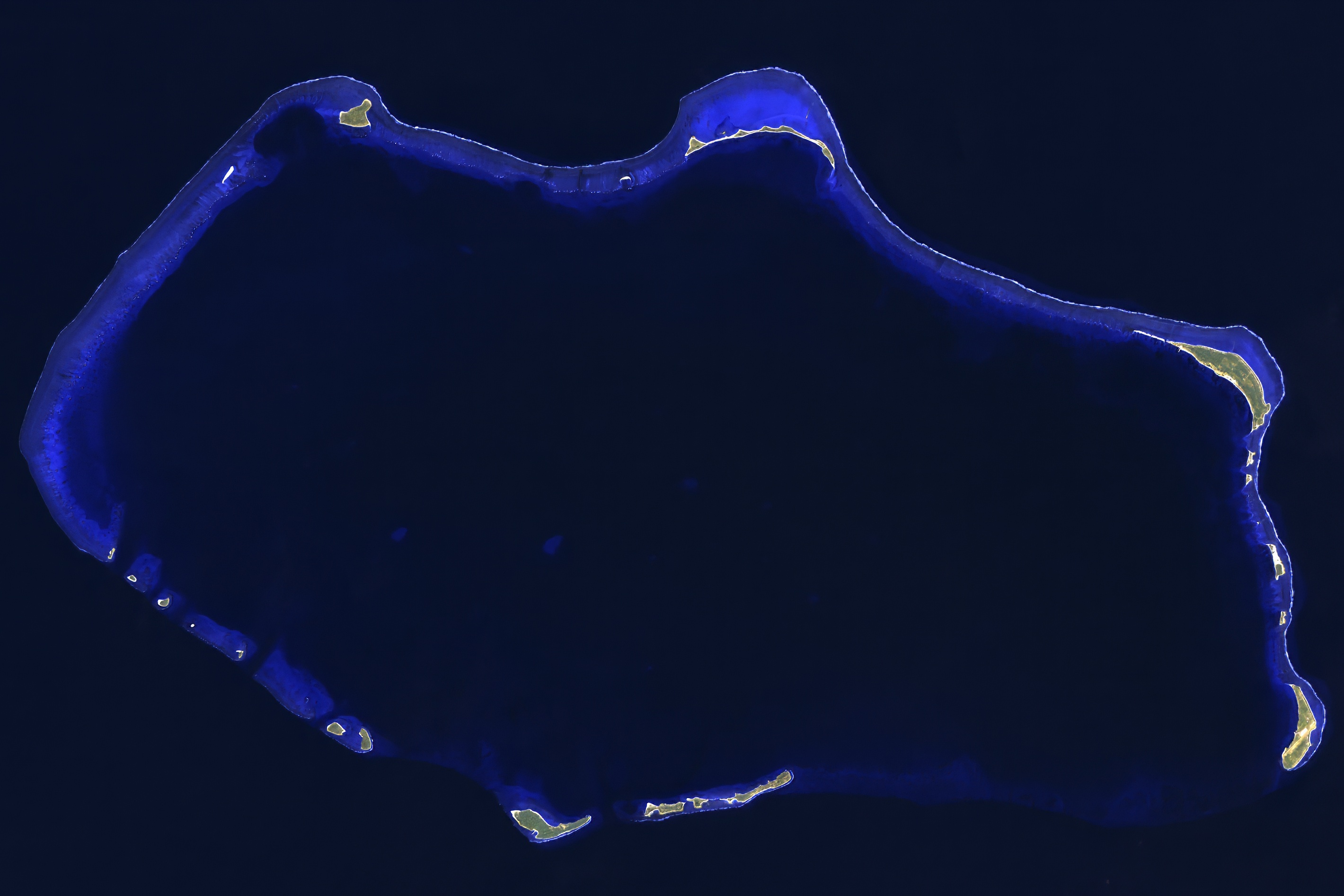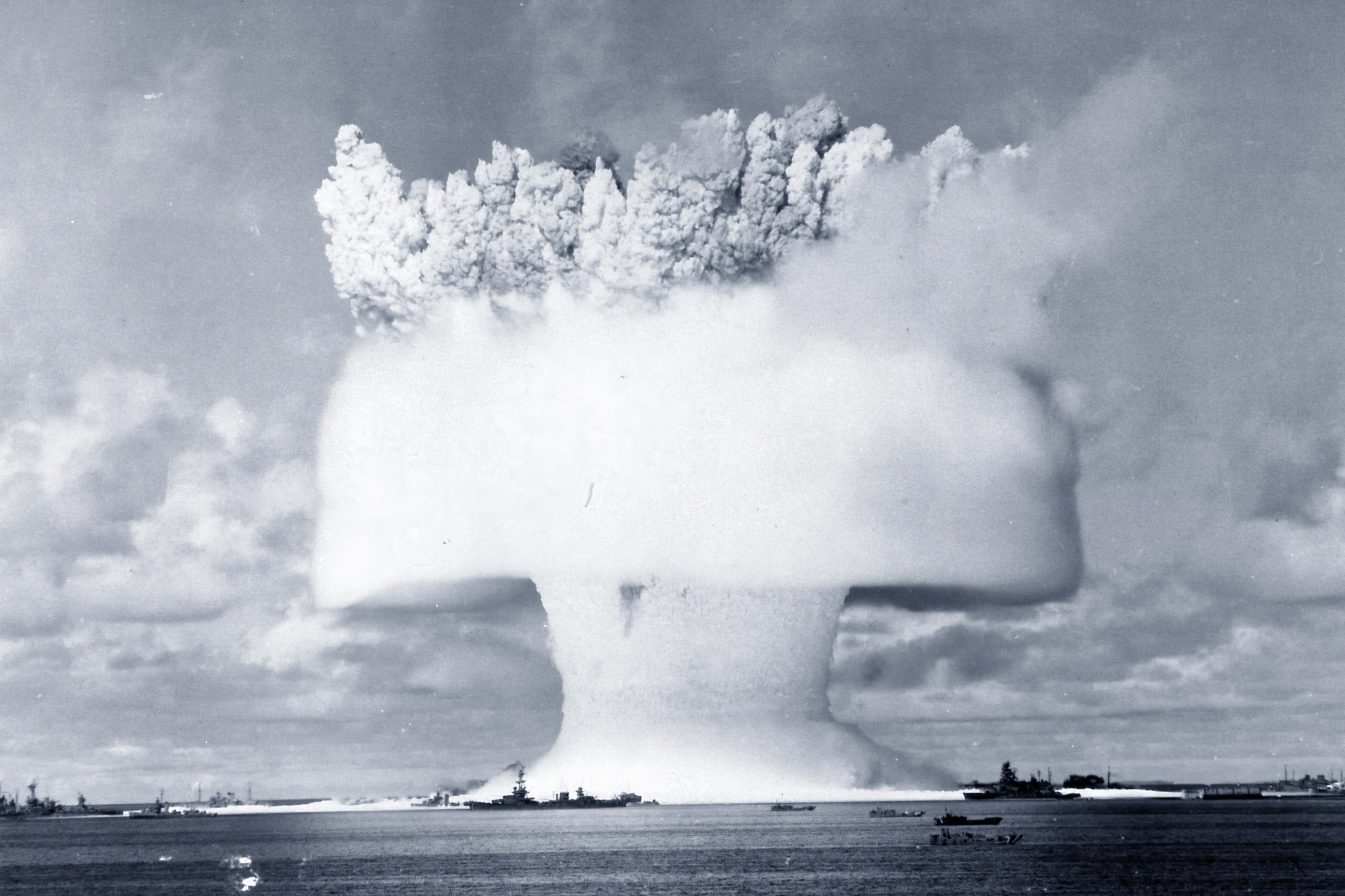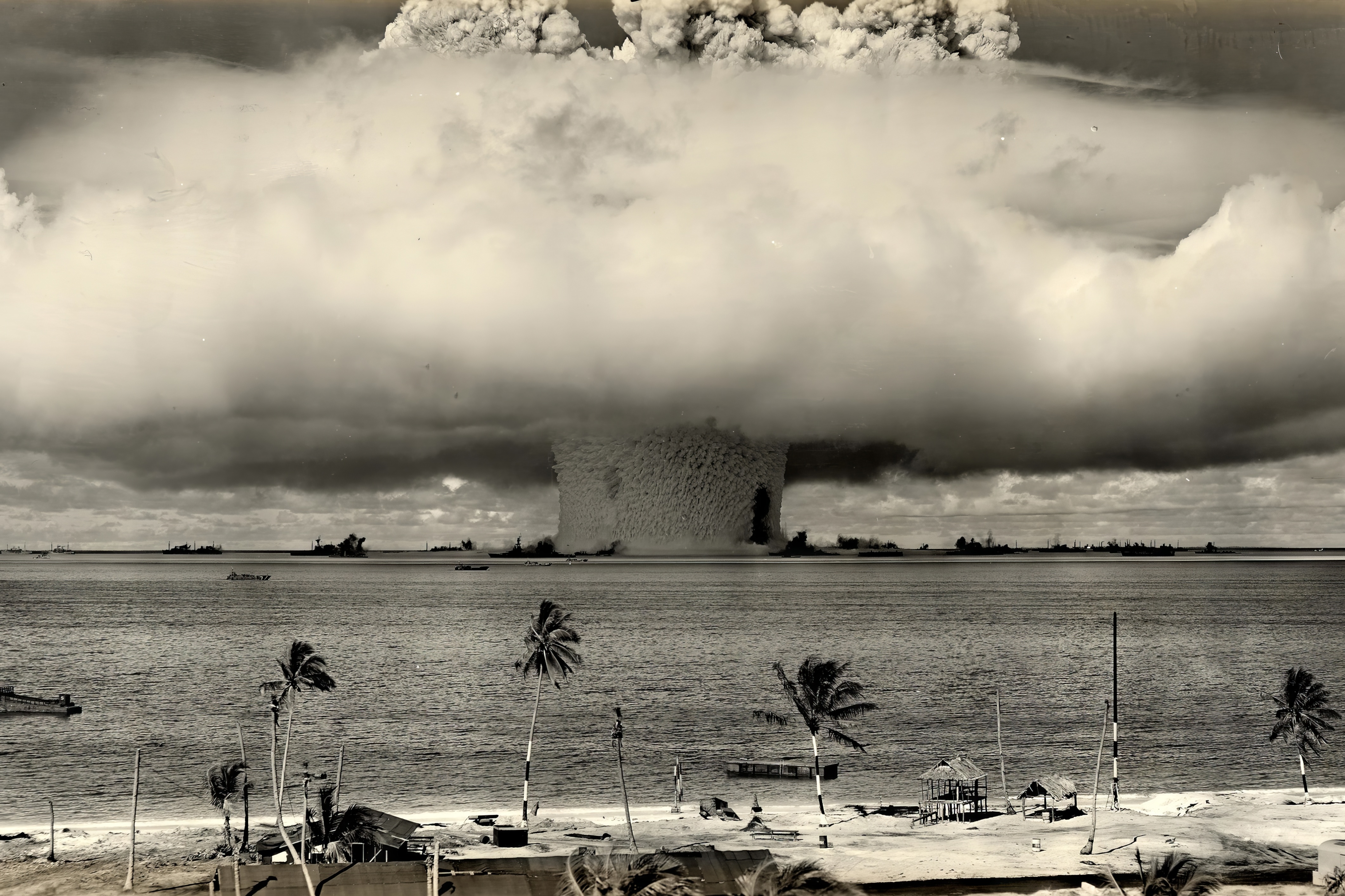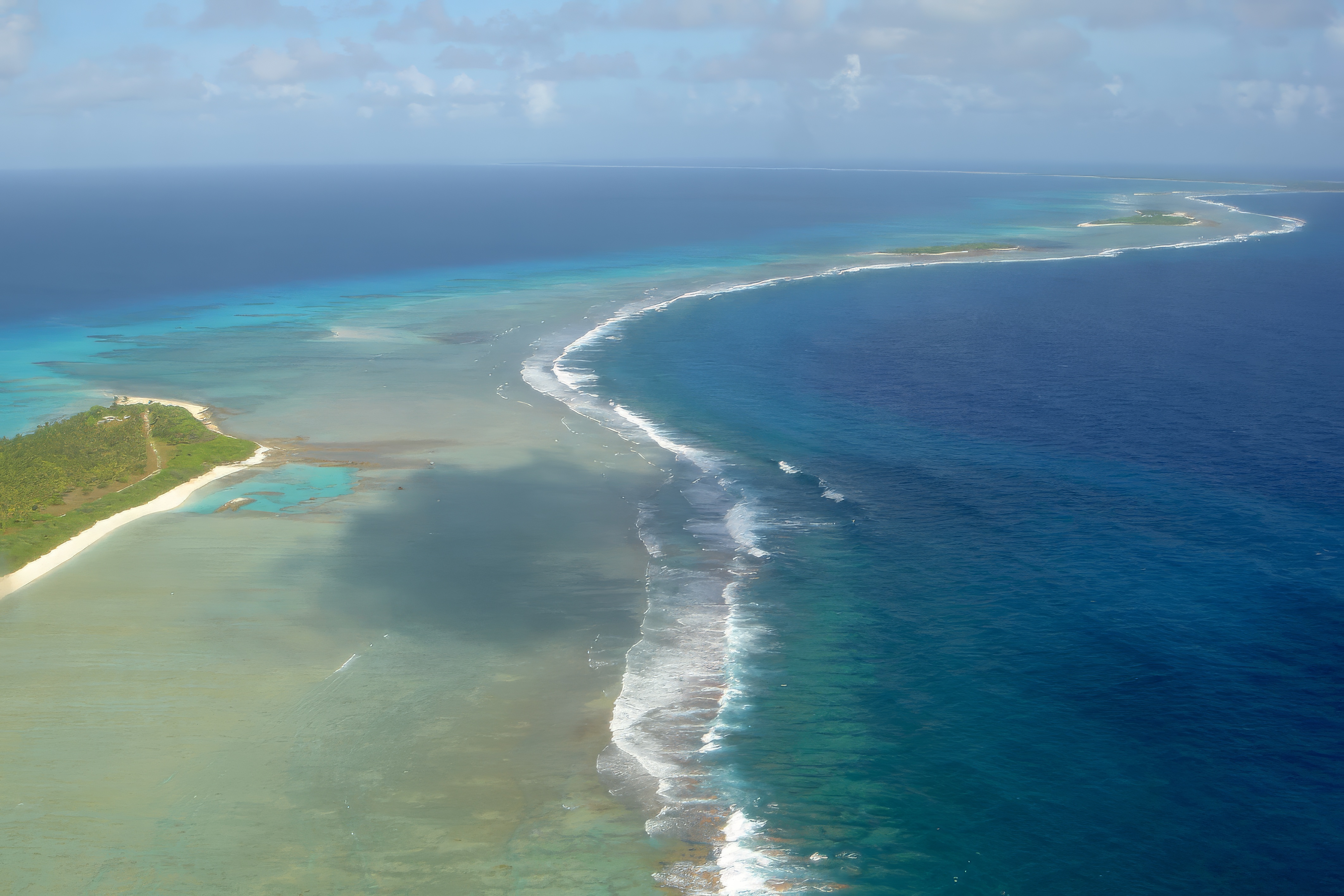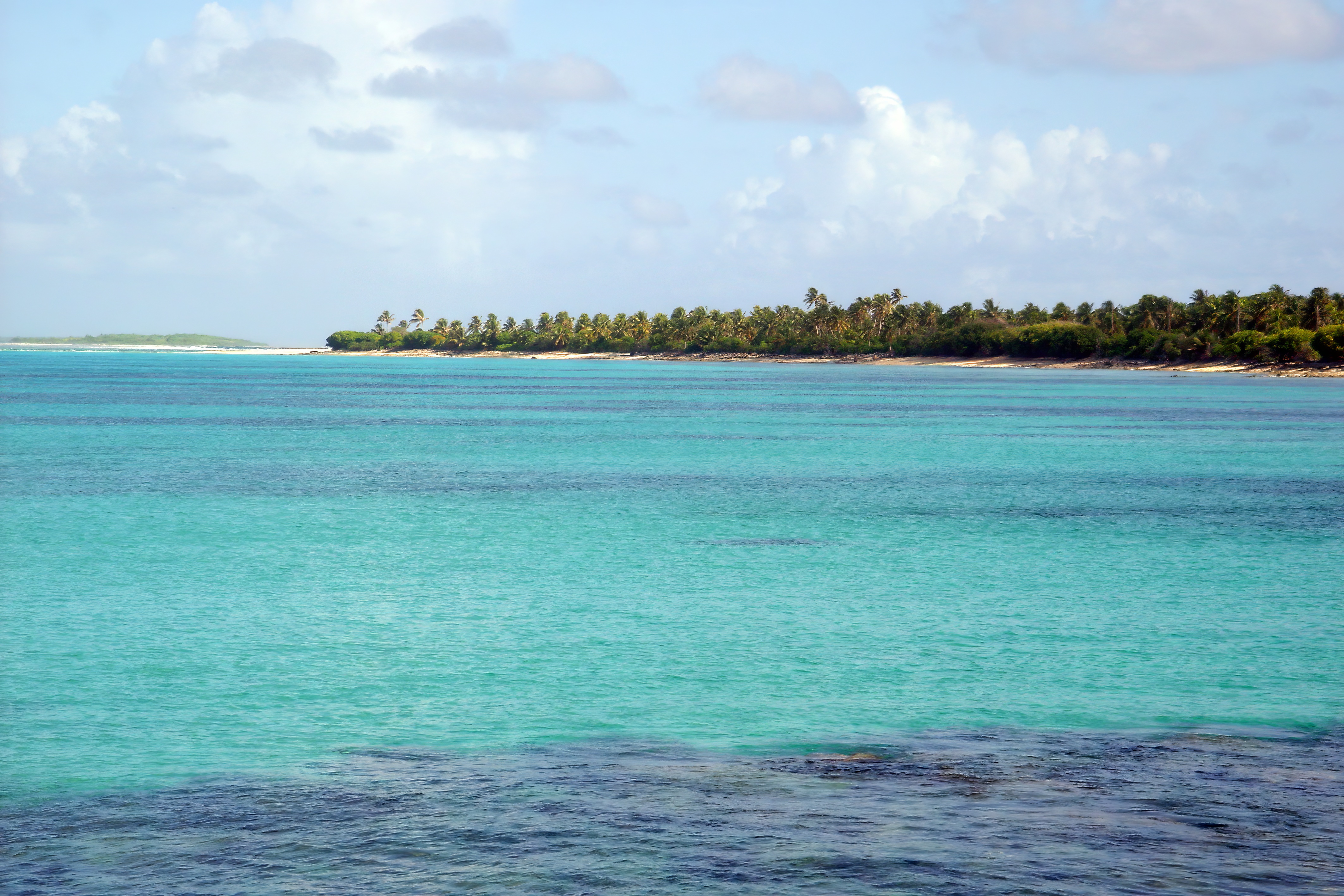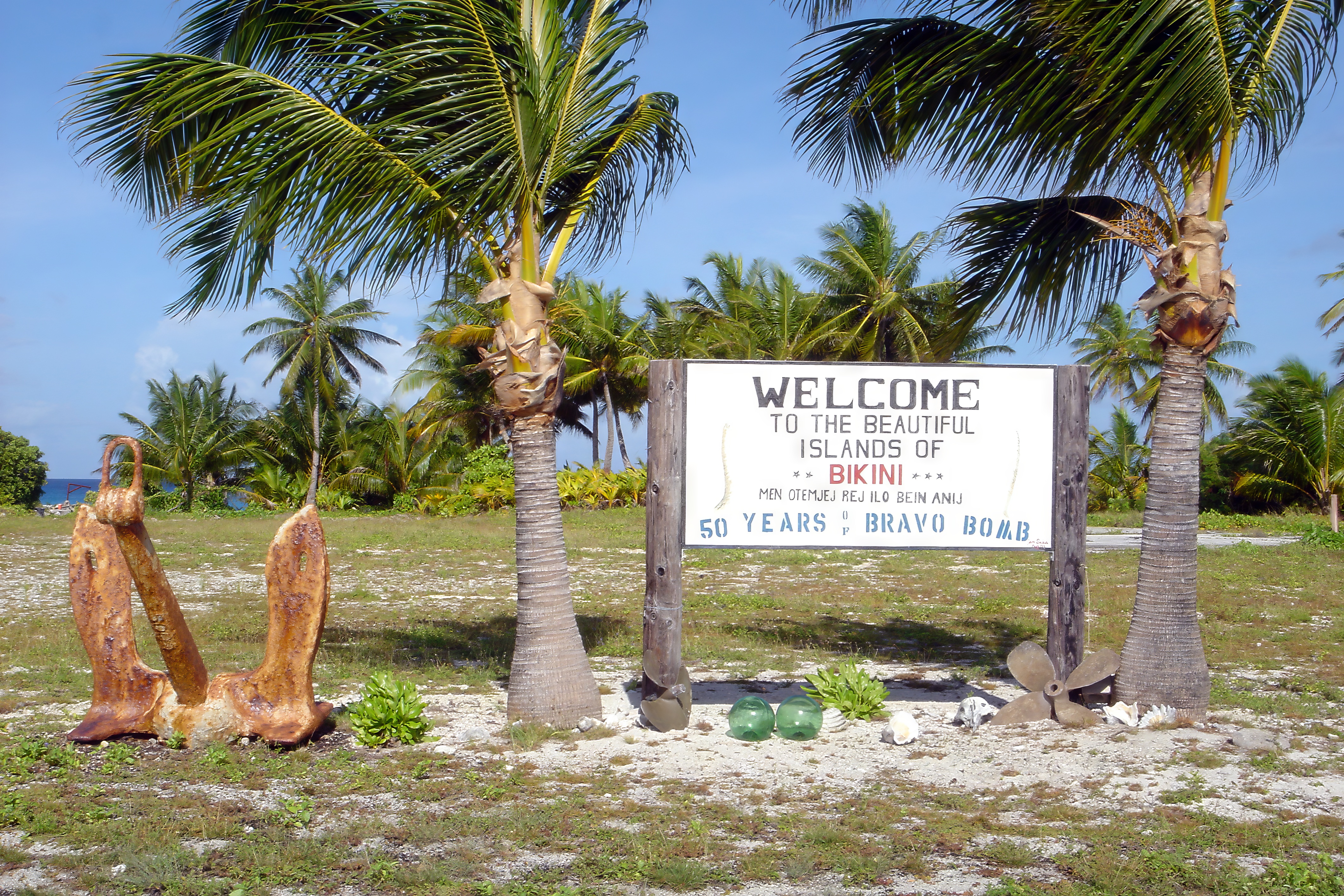Bikini Atoll, located in the Pacific Ocean within the Marshall Islands, is a place of historical significance due to the U.S. nuclear testing conducted there during the mid-20th century. After the tests, the atoll has transformed into a thriving marine and diving paradise.
Nuclear Testing
Bikini Atoll has become synonymous with the dawn of the nuclear age and the subsequent Cold War era. Located in the central Pacific Ocean, this atoll was once an idyllic and relatively remote part of the world, notable for its pristine environment and the traditional lifestyle of its inhabitants. However, its history took a dramatic turn in the mid-20th century, following the end of World War II.
In 1946, the United States, emerging as a global superpower and seeking to further its understanding of nuclear weapons, selected Bikini Atoll as the site for a series of nuclear tests. This decision was part of Operation Crossroads, a project aimed at investigating the effects of nuclear weapons on naval ships. Prior to these tests, the indigenous population of Bikini Atoll was persuaded to relocate, under the promise that they would eventually be able to return to their homes—a promise that remains unfulfilled to this day due to radioactive contamination.
Over a period of 12 years, from 1946 to 1958, the U.S. conducted 23 nuclear tests at the atoll, including the infamous Castle Bravo test on March 1, 1954. Castle Bravo was the most powerful nuclear device ever detonated by the United States at that time, yielding an explosion far greater than expected. The test resulted in significant radioactive fallout, affecting not only the Bikini Atoll but also neighboring atolls and even a Japanese fishing boat, the Daigo Fukuryū Maru, leading to international outcry.
The legacy of nuclear testing at Bikini Atoll is profound and multifaceted. Ecologically, it transformed a once-pristine environment into a radiological hazard zone, with long-lasting effects on the local flora and fauna. For the Bikinians, the tests were a cultural and personal tragedy, as they lost their ancestral homeland and traditional way of life. The forced displacement and continued inability to return to their home island remains a source of distress and injustice.
On a global scale, the tests at Bikini Atoll were a stark demonstration of the devastating power of nuclear weapons and played a significant role in shaping international perceptions of nuclear warfare and the need for arms control. The haunting images of mushroom clouds rising over a tranquil Pacific lagoon became emblematic of the nuclear age, serving as a sobering reminder of the potential for human-made destruction on an unprecedented scale. Bikini Atoll stands as a poignant symbol of the paradox of technological progress – a place of natural beauty transformed into a site of immense power and peril.
Bikini Atoll Flag
The flag of Bikini Atoll, officially adopted in 1987, is deeply symbolic and reflects the atoll's history with nuclear testing. Its design intentionally mirrors the United States flag, commenting on the impact of U.S. nuclear testing on the atoll and its inhabitants. The flag features 23 white stars arranged in a circle, each star representing one of the nuclear bombs detonated on Bikini Atoll. The three black stars in the upper right corner hold multiple meanings: they represent the three islands within the atoll that were obliterated by the 15-megaton Bravo nuclear test, and they also symbolize the displaced Bikinians, acknowledging their forced relocation due to radioactive contamination.
The pair of black stars located in the bottom right corner of the Bikini Atoll flag symbolize Kili Island and Ejit Island of Majuro Atoll, the current homes of the Bikinian people, situated 425 miles (684 km) south of Bikini Atoll. These stars are deliberately placed at a distance from the stars representing Bikini on the flag, reflecting not only the geographical separation but also the stark contrast in living conditions experienced by the Bikinians in these locations compared to their original home.
The phrase MEN WŌTŌMJEJ REJ ILO PEIN ANIJ, written in Marshallese on the flag of Bikini Atoll and translating to "Everything is in the hands of God," echoes the words of Bikinian leader Juda in 1946. He spoke these words to U.S. Commodore Ben Wyatt when the United States requested the islanders to relinquish their home for what was claimed to be "the good of mankind and to end all world wars."
Interesting Facts About the Nuclear Tests:
- During the first atomic bomb test at Bikini Atoll, named Test Able, the bomb missed its target ship by 1,500 to 2,000 feet and only sunk five ships.
- Test Baker, the second atomic bomb test, was an underwater explosion that created a 94-foot-high tsunami, sinking eight ships and coating many with radioactivity.
- Soviet representatives, sent by Lavrentiy Pavlovich Beria, observed the tests but were reportedly unimpressed, viewing them as ineffective intimidation.
- A third planned atomic bomb test, Charlie, was canceled due to concerns about squandering limited nuclear resources and lack of military value.
- The Castle Bravo hydrogen bomb test produced a 15-megaton blast, three times larger than expected, vaporizing three islands and creating a mile-wide crater.
- The Castle Bravo test contaminated 23 crew members of a Japanese fishing boat and residents of nearby atolls, leading to the death of a crew member from radiation sickness.
- H-bombs tested in the 1950s had quirky nicknames like “Shrimp” for the Castle Bravo bomb and “Runt I” for the Romeo test bomb.
- Despite initial promises, Bikini Atoll remains unsafe for habitation due to high levels of Cesium-137 and other radioactive materials. In 2010, UNESCO declared it a World Heritage Site.
Marine and Diving Paradise
Today, Bikini Atoll has rebounded as a sought-after destination for divers and marine enthusiasts. Its crystal-clear waters are home to diverse marine life, including colorful coral reefs and sunken shipwrecks.
Environmental Recovery
Efforts have been made to restore the natural environment of Bikini Atoll, and it has become a UNESCO World Heritage site due to its unique blend of history and natural beauty.
Present Attraction
Bikini Atoll continues to draw explorers, historians, and divers from around the world who come to witness the resilience of both the environment and the human spirit.
Bikini, the Two-Piece Swimsuit
The modern bikini, a revolutionary two-piece swimsuit, derived its name from Bikini Atoll, an area that became infamously known for its nuclear tests in the mid-20th century. This naming was more than a mere coincidence; it was a deliberate choice by the French automobile engineer turned fashion designer, Louis Réard. Réard introduced the bikini on July 5, 1946, just days after the first post-war tests at the Bikini Atoll. The timing and naming were strategic, intending to capture the public's attention amidst the sensational news of the nuclear tests.
Réard's choice of the name "bikini" was symbolic, suggesting that the impact of the swimsuit on fashion and society would be as explosive as the nuclear tests themselves. He believed that this daring and minimalistic design would cause a shockwave in fashion similar to that of the atomic bomb in warfare. The bikini was indeed controversial at its debut, with its revealing nature challenging the norms of modesty in swimwear prevalent at the time. Initially, the bikini was so provocative that Réard struggled to find a professional model willing to wear it. He eventually hired Micheline Bernardini, a Parisian showgirl, to showcase the design.
The bikini's introduction marked a significant cultural shift. While it faced resistance and was even banned in certain countries initially, it gradually gained acceptance, particularly as attitudes towards body exposure and swimwear relaxed in the post-war era. Over the decades, the bikini has evolved in style and significance, becoming a symbol of liberation and fashion. Its connection to Bikini Atoll, however, remains a somewhat ironic footnote in its history, juxtaposing its frivolous and leisurely associations with the grave and profound implications of nuclear testing.
Bikini Atoll is a testament to the power of nature's recovery and serves as a reminder of the enduring legacy of historical events.
